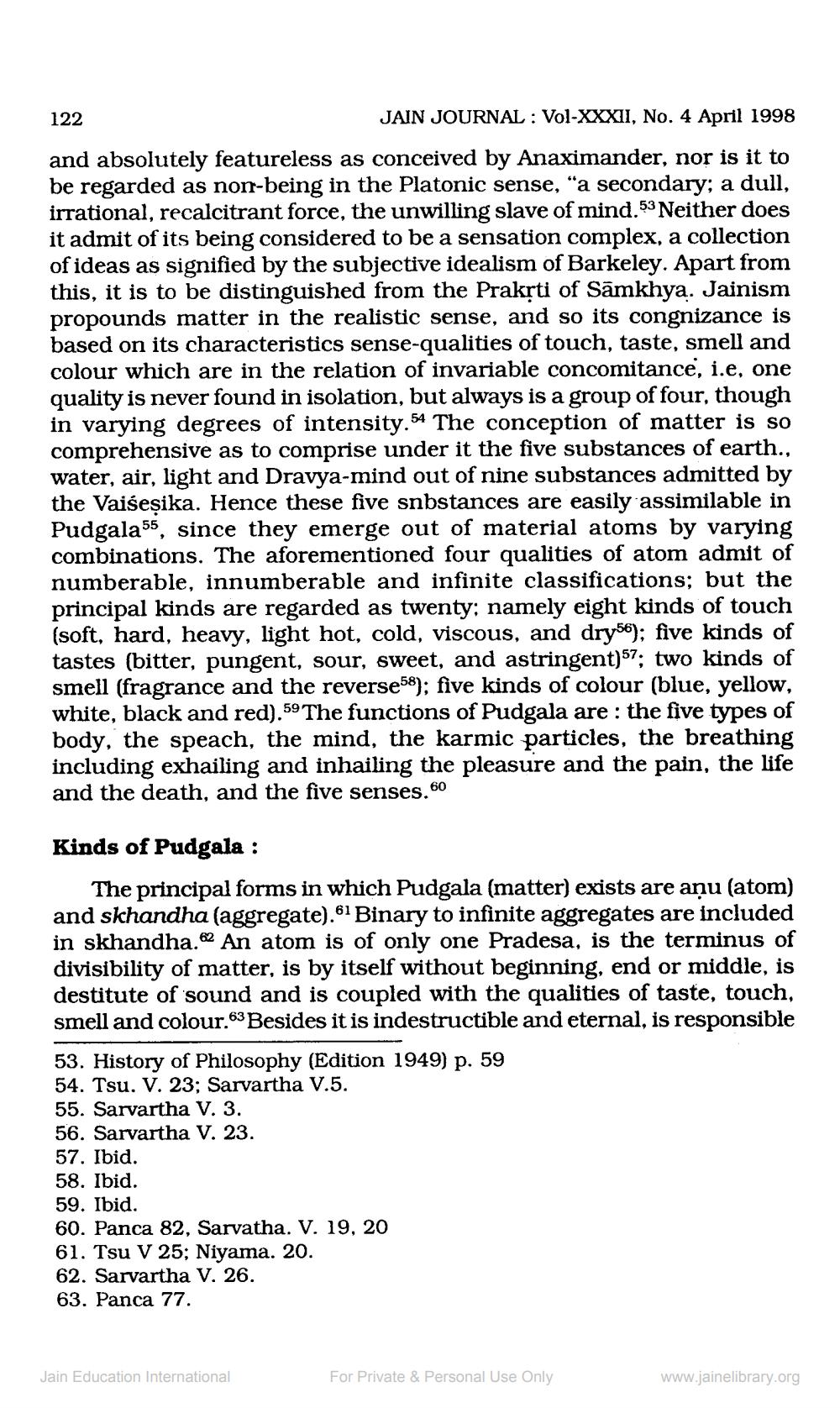________________
JAIN JOURNAL: Vol-XXXII, No. 4 April 1998 and absolutely featureless as conceived by Anaximander, nor is it to be regarded as norr-being in the Platonic sense, "a secondary; a dull, irrational, recalcitrant force, the unwilling slave of mind. 53 Neither does it admit of its being considered to be a sensation complex, a collection of ideas as signified by the subjective idealism of Barkeley. Apart from this, it is to be distinguished from the Prakṛti of Samkhya. Jainism propounds matter in the realistic sense, and so its congnizance is based on its characteristics sense-qualities of touch, taste, smell and colour which are in the relation of invariable concomitance, i.e, one quality is never found in isolation, but always is a group of four, though in varying degrees of intensity.54 The conception of matter is so comprehensive as to comprise under it the five substances of earth., water, air, light and Dravya-mind out of nine substances admitted by the Vaiseṣika. Hence these five snbstances are easily assimilable in Pudgala55, since they emerge out of material atoms by varying combinations. The aforementioned four qualities of atom admit of numberable, innumberable and infinite classifications; but the principal kinds are regarded as twenty; namely eight kinds of touch (soft, hard, heavy, light hot, cold, viscous, and dry56); five kinds of tastes (bitter, pungent, sour, sweet, and astringent)57; two kinds of smell (fragrance and the reverse58); five kinds of colour (blue, yellow, white, black and red).59 The functions of Pudgala are: the five types of body, the speach, the mind, the karmic particles, the breathing including exhailing and inhailing the pleasure and the pain, the life and the death, and the five senses.60
122
Kinds of Pudgala:
The principal forms in which Pudgala (matter) exists are aņu (atom) and skhandha (aggregate).61 Binary to infinite aggregates are included in skhandha.62 An atom is of only one Pradesa, is the terminus of divisibility of matter, is by itself without beginning, end or middle, is destitute of sound and is coupled with the qualities of taste, touch, smell and colour.63 Besides it is indestructible and eternal, is responsible
53. History of Philosophy (Edition 1949) p. 59
54. Tsu. V. 23; Sarvartha V.5.
55. Sarvartha V. 3.
56. Sarvartha V. 23.
57. Ibid.
58. Ibid.
59. Ibid.
60. Panca 82, Sarvatha. V. 19, 20
61. Tsu V 25; Niyama. 20. 62. Sarvartha V. 26. 63. Panca 77.
Jain Education International
For Private & Personal Use Only
www.jainelibrary.org




